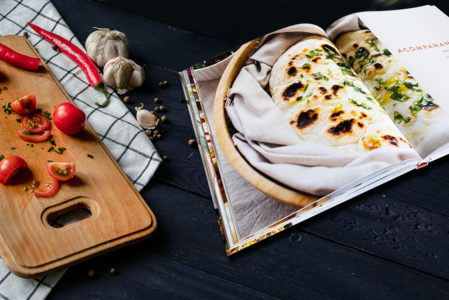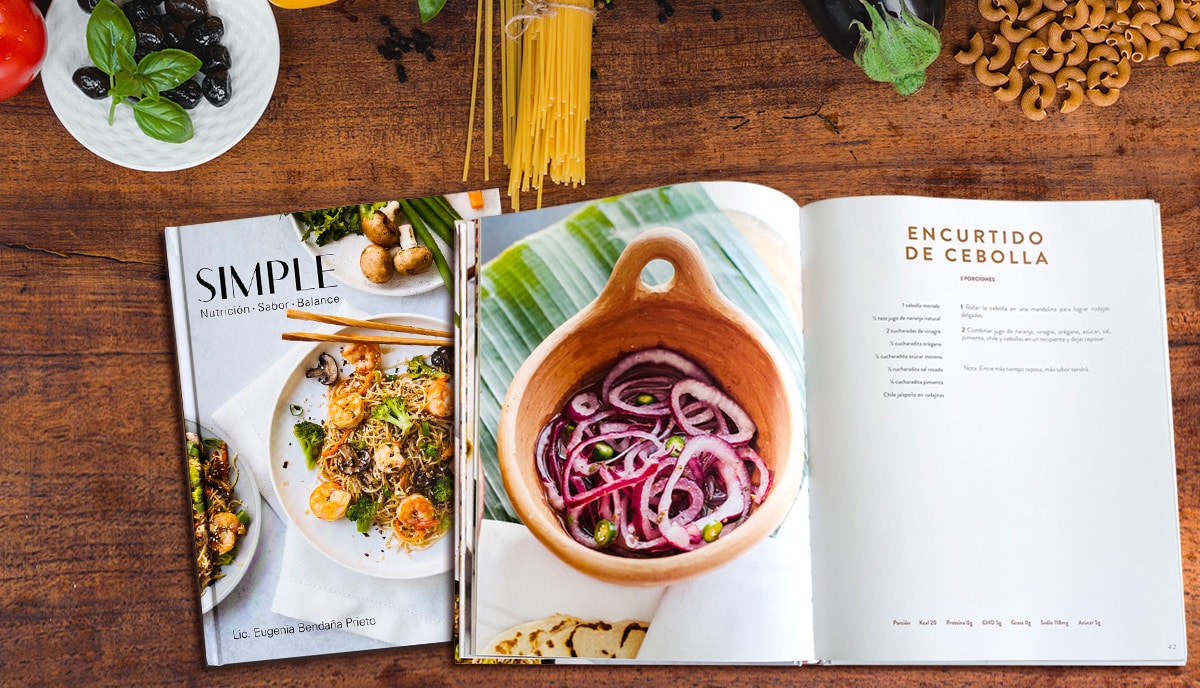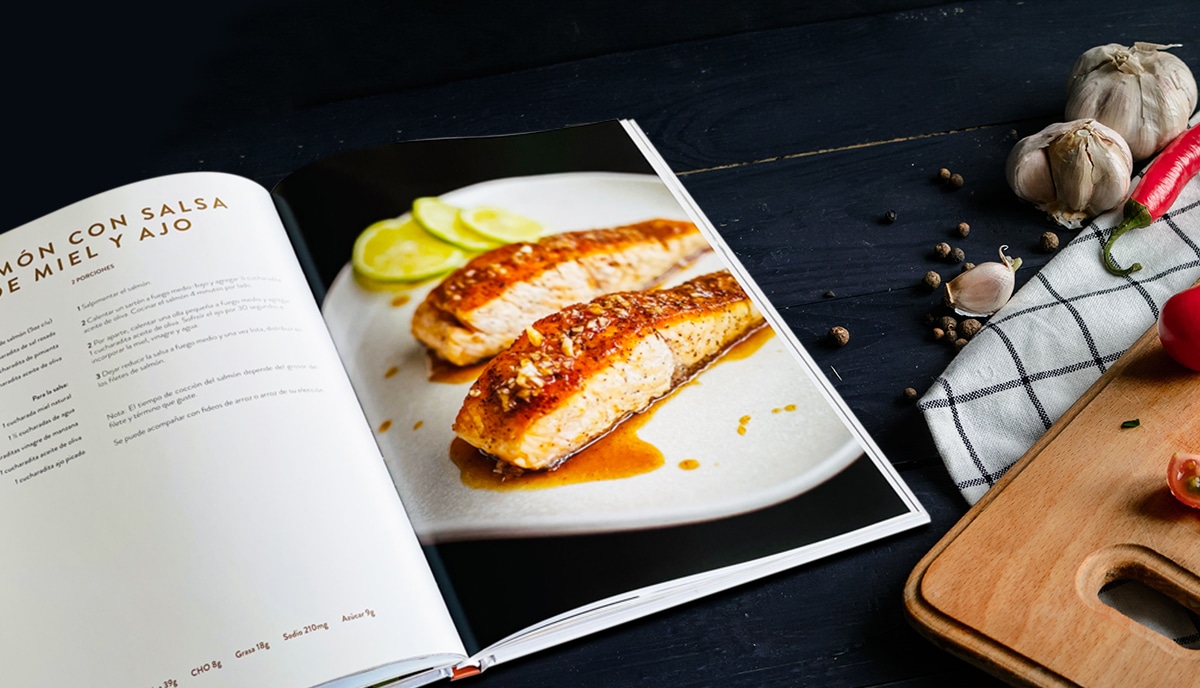This post provides a full tour of the cookbook development process from getting your ideas and testing your recipes, to designing, printing, and selling your book
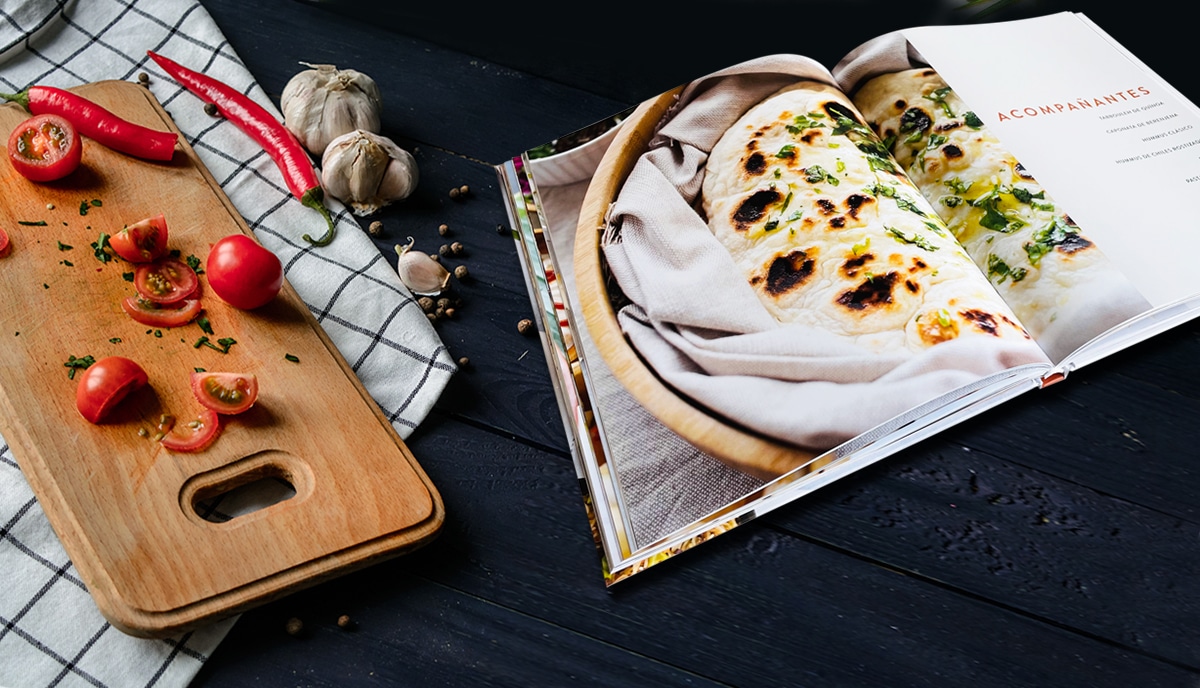
Do cookbooks sell well?
Cookbooks sell extraordinarily well. According to Kristen Mclean of the NPD market research group, close to 20 million cookbooks fly off the shelves every year in the US alone. Not only that, but it’s one of the most stable book markets with only tiny annual fluctuations. It even survived the Covid-19 pandemic.
While there was nothing good about the pandemic itself it boosted the cookbook market as more people tried their hands in the kitchen — remember all those cookies, banana cakes, and loaves of soughdough bread? For many, they discovered or rediscovered a passion for good home cooking that’s continued even since we “got back to normal”.
What makes a cookbook sell?
Cookbooks are more than just a compilation of recipes; they express the chef’s — that could be you! — expertise, creativity, and passion. Whether you’re a food blogger, a cooking instructor, a health and wellness expert, or an enthusiastic homemaker, releasing a cookbook can help you monetize your content and establish yourself as an authority in your field. Several factors go into making a cookbook successful:
- Excellent, tasty recipes — tried and tested
- Beautiful design and formatting
- A user-friendly layout
- Engaging, simple instructions and supporting text
- Superb food photography
- High-quality paper stock and professional printing
No cookbook sells itself, so you’ll still need to do some marketing and promotion, but these are the foundations for creating a cookbook to sell. We know, because we’ve printed a gazillion cookbooks in our 25 years of success in the offset printing industry. Can you still sell cookbooks? Yes! So, let’s share step-by-step what we’ve learned over the years about creating a beautiful, commercial cookbook to promote your aims, boost your reputation, and make a profit in sales.
Creating a commercially viable cookbook step-by-step
If creating a cookbook to sell appeals to you, you‘ll find everything you need to know to get started right here on this page. Even if you’re not interested in the commercial potential of your cookbook and only want to print a few copies for family and friends, you’ll find plenty of helpful guidance in what follows.
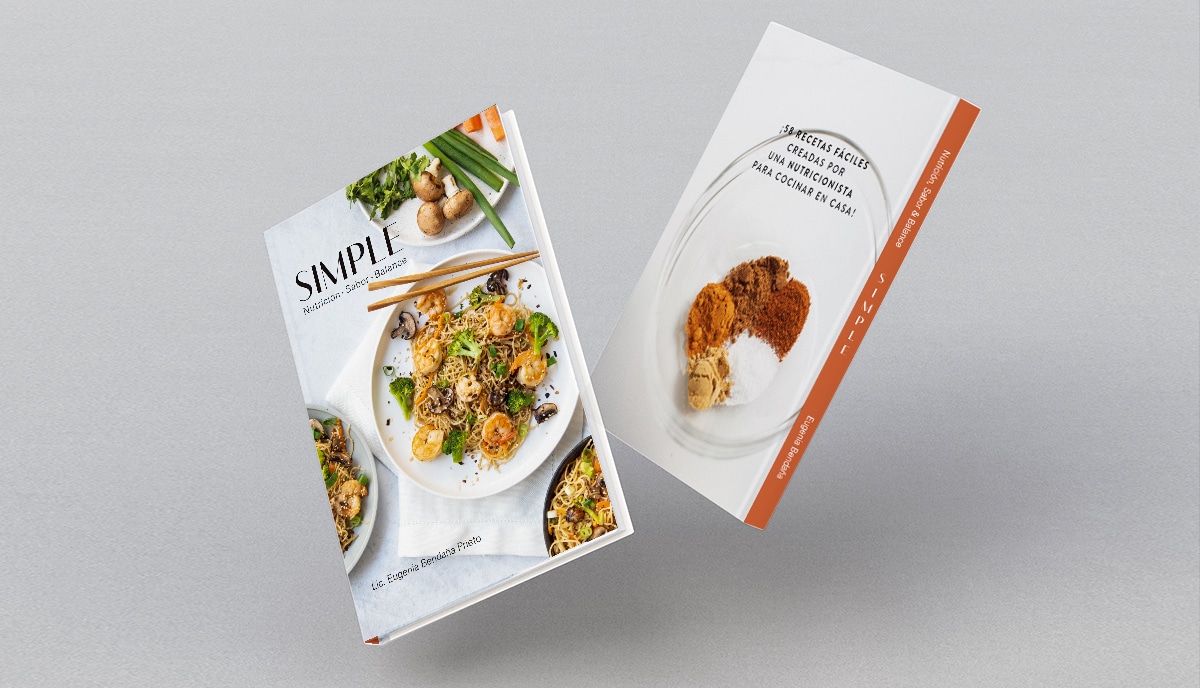
1. Choose a theme or topic for your cookbook
The first stage in publishing a cookbook is to settle on a broad topic or structure for the book to follow. Experience and analysis both show that the bestselling cookbooks all have a tightly themed structure aimed at a specific user. So, consider the people whose attention you want to catch, as well as the recipes they would be interested in trying.
First, evaluate your specific area of expertise or interest — your cookbook should draw on your established strengths in the kitchen; it’s not the place for experimenting — and then select a subject related to that area. For example, if you’re a food blogger recognized for providing healthful and delicious recipes on your site, consider producing a cookbook that focuses on plant-based meals or gluten-free options for folks who want to eat healthier. Likewise, you could produce a cookbook that went all the other way, offering indulgent sugar-rich recipes for special treats and occasions. Or maybe your strength is whipping up a delicious entrée that takes less than 15 minutes to prepare. Whatever your strength is, play to it. Here are several potential “themes” that we’ve seen work well in the marketplace:
- Student survival (healthy eating on a tight budget)
- One pot cooking (delicious and nutritious recipes with almost no washing up!)
- Sinful and sexy (indulgent recipes for dates and seduction)
- Fast and fit (easy-to-prepare full nutrition meals for athletes and sports people)
- Dinner parties by design (complete three to five course menus for hosting classy and memorable dinner parties)
You get the idea. A theme or topic like this serves several purposes. First, it helps you narrow down on which recipes you’ll select from your repertoire (the days of the “Cookery Bible” volumes with thousands of recipes for every occasion are past; these days, it’s all about the niche). Second, it helps you understand who your target audience will be, which will help you figure out the style, design, and “voice” that’s most likely to appeal to that demographic. And finally, it can give you a clearer concept of where and how to market your finished cookbook.
2. Select the recipes for your cookbook
Once you’ve decided on a theme or topic, the next step is to collect a variety of recipes that are related to that niche. Recipes that offer the culinary solutions your target audience is looking for (dinner party recipes, healthy meals, fat loss snacks, stuff to make with the kids, or food from a specific country or region, etc.) For a modern cookbook — move over, Mrs. Beaton! — your goal should be to have between 30 and 40 recipes, each of which should be distinct from the others in terms of flavor profile and preparation method while still related to the theme.
Selecting a variety of recipe profiles not only keeps each one interesting but supports the educational value of your cookbook as users can learn a range of techniques. You also have the option of putting “bonus” recipes within the cookbook or grading them according to difficulty, which will enhance the overall reading experience.
Make sure that all of your recipes are put up in a word processor and that the formatting is clear and consistent throughout. Include both step-by-step instructions and a list of all the ingredients needed for each recipe. Another option to improve the visual appeal of your cookbook is to include illustrations that highlight each step of the cooking process and high-definition photographs of the finished food.
A quick word about photography and graphics for your cookbook. The old saying that “the first taste is with the eye” is true. Yes, you can publish a cookbook that has no illustrations, graphics, or photography. But we know that the cookbooks we’ve printed that have sold very well have all been heavily — and professionally — illustrated. So, at the least, get a high-quality DSLR camera and learn how to use it. At best, employ a professional food photographer and stylist and a graphic designer to handle this side of things for you. Unless you are a pro photographer, a skilled graphic designer, and a first-class cook, in which case, you’re good.
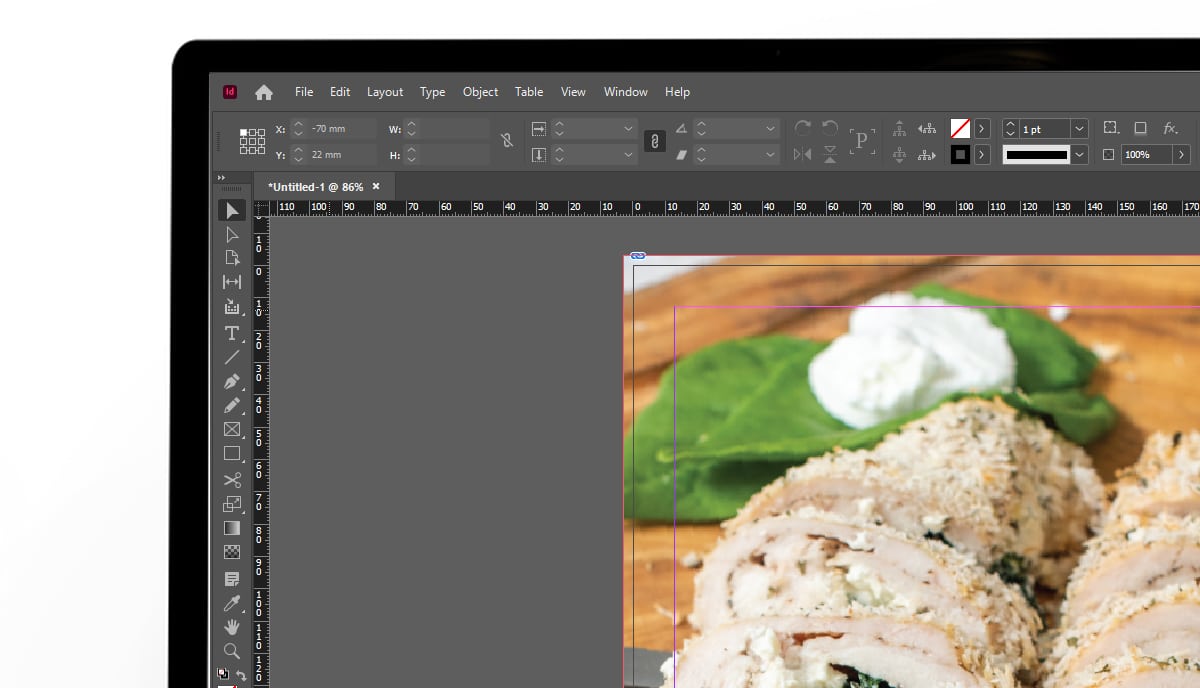
3. Create a layout for your cookbook and a cover design.
Before you build out your cookbook design, do some preliminary planning and decide on a distribution strategy. You must complete this phase before proceeding to the actual design process. Do you aim to sell it just through your own website, or do you also intend to make it accessible for purchase on other websites that specialize in online product sales? What about bricks-and-mortar bookstores?
Why do you need to think about distribution before you design? Because if you’re going to, say, pay a distribution company — like Ingram, Baker & Taylor, or Gardners — to handle distribution for you, you should have no problems with a large format hardcover edition. But if you’re going to sell only directly through your website and mail out the books from your spare room, consider a smaller format in paperback to keep costs down, for example. And if you want to get your cookbook into the industry catalogs and physical bookstores, you’ll need an ISBN, a barcode, and a copyright page, all of which need factoring into the design. You get the idea.
Examining other cookbooks, whether they are already in your collection or ones you browse or buy in stores, can give you lots of ideas for the layout and presentation of your own. You can get these ideas by looking through various cookbooks while you consider:
- Size and format
- Binding: hardcover, softcover, saddle stitch, spiral bound?
- Orientation: portrait or landscape?
- Number of pages
- Paper quality: gloss, matte, uncoated?
- Paper weight: thick pages or thinner pages?
- Text/photo ratio: mostly visual with supporting text or the other way round, or somewhere in-between?
- Photo style: Full page for each recipe? Half page? Instructional montage?
- Text: Preface? Introduction? Bio? Anecdotes? Quotations? Bullet points? Summary boxes? Appendix? Weights and measures?
- Extras: Dust jacket? Laminated “quick reference” cards?
Look for cookbooks that have a strong connection to the overall look you want to achieve and take photos and make notes. The range is vast, from huge hardcover publications designed to seem like photo albums or coffee table books to spiral bound collections of laminated recipe cards that can fit in a pocket or handbag. But looking at what’s already out there — and selling — will give you a lot of useful information to feed into your own cookbook design.
If you’re new to graphic design, you should definitely start with a template rather than from scratch. If you decide to print your cookbook with us, we’ll give you a free cookbook template customized to your needs according to your chosen page count, format, orientation, and size. You can use this template with any high-quality professional book design software (we recommend Adobe Illustrator and InDesign; it’s what we use) to layout the text and artwork/photography for your own cookbook. We’ll also assign you a personal, named consultant you can turn to at any point in the process for help and advice. Once you’re ready, our expert in-house design team will manually check all your files to make sure they’re “print ready”. If they find any errors or issues, they’ll correct them if they’re small, or explain what the problems are if they’re more complex, and help you fix them.
The alternative to the DIY approach is to employ a freelance book designer to prepare the files for you. How you decide which option is best for you will depend on your current skills, available time, and budget. But whether we work with you or collaborate with your chosen designer, you can guarantee that QinPrinting will take a positive and helpful approach at every step of the journey. We are as committed to genuine customer service as we are to printing only the highest quality books on the market.
Besides the layout, think about the many printing and binding options available for your cookbook. Even if you printed in black-and-white, we still recommend premium ink and paper for the best print quality and the overall durability of your book. You can choose between a hardcover, a paperback, and a spiral-bound edition for the book’s binding. Every option has its own set of pros and cons which you’ll need to think about and evaluate depending on your readership’s needs, your ideas about style, and your budget.
Most times, you’ll need to choose at least two kinds of paper for your cookbook: for the cover and for the interior pages. Ask us for our paper sample catalog and we’ll happily send you a copy just for the cost of mailing it. Once you’ve browsed that, talk to us and we’ll advise you about the best options for your project. What we don’t know about paper and printing, as the saying goes, really ain’t worth knowing!
If you’re not outsourcing design to a professional graphic designer but you’ve chosen to handle everything yourself, we recommend you use Adobe Illustrator and InDesign for your cookbook layout and graphics. Remember to account for bleed, trim lines, safety margins, and spine thickness (based on the thickness/weight of the paper you’ve selected and the number of pages). If you can prepare your graphics as vectors, you’ll get a superb printing result. With photographs and other images that can’t be vectorized, make sure you export them in high definition. By high definition, we mean at least 300 dpi. Export all files as print quality PDFs.
Again, if you work with us, you’ll get a ton of individually tailored support with a named consultant assigned to you who will be available to give you information, answer questions, and guide through the entire process from design to delivery of your finished cookbooks. We care about all our customers and pride ourselves on the quality of our services. It’s the foundation of our worldwide reputation for excellence.
4. Make a lot of noise about your cookbook and publicize it extensively
When you’ve done creating your cookbook and you’re waiting for delivery of your finished copies, it’s time to step up your efforts at advertising, promoting, and selling it to potential purchasers. To get the most from your efforts, begin promoting your upcoming cookbook while it is still in the development and production stages. This will ensure that the greatest number of individuals are aware of its existence and are eager to buy it before it comes out.
You can build anticipation and enthusiasm for the upcoming release by utilizing the web channels that you currently have, such as your gourmet blog and social media profiles. Once you have a completed cover design, you can use that in promotions to push pre-orders. Pre-orders also allow you to gauge the level of interest before you commit to a final number on your print run, so you can make sure that you’re optimizing your cost/benefit ratio.
Make certain that your marketing plan is aimed at the people who are the best fit for the book and that you target them where they are. For example, Instagram is a popular platform for people who love food and cooking, as is YouTube. Even if you have only a few Instagram followers or YouTube followers, make it a priority to communicate with them by producing visually appealing content that is accompanied by interesting captions and uses hashtags to increase the visibility of your posts. If you want to reach a larger audience, think about collaborating with other food bloggers or influencers, cross-posting and guest blogging, for example. This will help you to expand your audience. Include relevant recipe articles or blog entries on your website to promote your cookbook. too.
In the cookbook business, establishing your credentials as an authority is often critical. Compiling a collection of recipes and publishing them in a book might boost your reputation as a recipe creator and expert in the industry. Make sure your cookbook is clearly displayed on your website, as well as any other online venues where you show your experience and talents, such as a video blog in which you show the recipes being used and show off the mouth-watering results.
Consider offering potential clients exclusive deals or special discounts to entice them to make purchases, especially in the early phases of your company’s introduction. And always ask buyers to review your book and share it on their social media and other platforms. This is extremely significant. Encouraging your readers and followers to leave reviews and testimonials on your website and elsewhere helps to develop social proof and persuade more people to buy your cookbook. Our experience has shown that while all these strategies are important, the strongest form of advertising and promotion is always good old “word of mouth”. But you need to put in the work to get the word out there in the first place and keep up the momentum once the ball gets rolling.
5. Print your cookbook and establish distribution channels
Once you’ve completed all the necessary revisions to the layout and got your marketing activities underway, it’s time to print and publish your cookbook. To gain the highest quality printing and binding, choose an offset printer such as QinPrinting that not only has a solid reputation for excellence but also specializes in printing books.
Before sending your files to be printed, make sure you have thoroughly checked and proofread them to ensure that they are free of any errors or inconsistencies introduced throughout the editing process. If you want to ensure the quality and readability of your recipes and other material, consider hiring a professional editor and proof reader. remember that we’ll go the extra mile for you in giving support — including technical and material help — if you’re one of our clients, we are a printer, not a publisher. So, we can’t offer you editorial services. It’s your responsibility to make sure that your text has been examined and corrected before you go to press.
As soon as the printed copies of your cookbook arrive, begin conducting a comprehensive final quality check to ensure that everything meets your expectations. You will need high-quality images of your cookbook in order to use them in advertising materials that are printed or published online. So, again, you’ll either need to invest in the photographic equipment and do it yourself or outsource to a professional photographer.
6. Additional considerations
Even though the procedures previously discussed address the most important parts of creating a wonderful cookbook, there are a few other things to keep in mind, such as:
Beta readers
Before you get your cookbook printed, get a second opinion on the recipes and other portions of the book. While a proofreader can spot any grammatical errors, mistakes, or inconsistencies in your writing that you may have missed, they won’t comment on the content per se. So we recommend you try to drum up a handful of trusted beta readers. There are agencies which can put you in touch with readers who will critique your book from a user perspective for a fee. But you should be able to save the cost and reach out to your top social media followers and even friends and family.
Distribution and shipping
As you’ll be selling physical copies of your cookbook, you must address the logistics of storing and shipping them. This is especially important if you intend to sell via online platforms such as your own e-store, Amazon, Etsy, and so on. You need to decide if you’ll literally handle the shipping yourself — packing the books as they’re ordered and mailing them out — or if you’ll use a third-party warehouse and distribution service. Fulfillment services make life easier but they cost more. In the end, it depends on how you want to balance cost with convenience. Either way, think carefully about your options and plan.
So, there’s a lot involved in designing, printing, and marketing a cookbook. But do cookbooks still sell? Yes, they do. In fact, it’s a burgeoning and competitive market. But that’s just another reason to make sure that you do everything possible to make your cookbook the best it can be.
Talk to us!
As soon as you’re ready to design and print a beautiful, high-quality cookbook — and world class customer support matters to you as much as a high-quality product — then we should talk. Get in touch today to talk about your ideas or to request a no-obligation quote. We can’t wait to help you make a delicious, mouthwatering cookbook!
